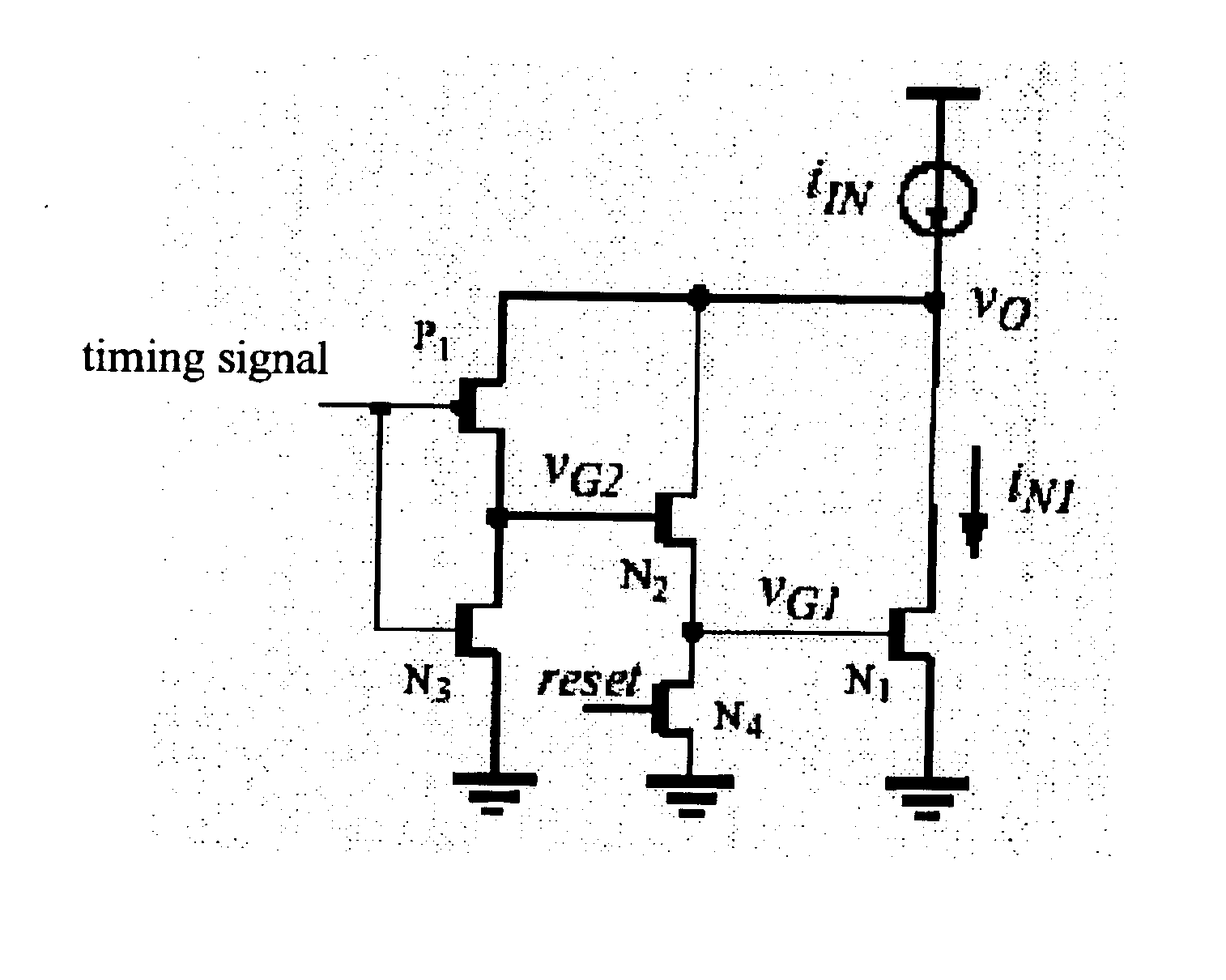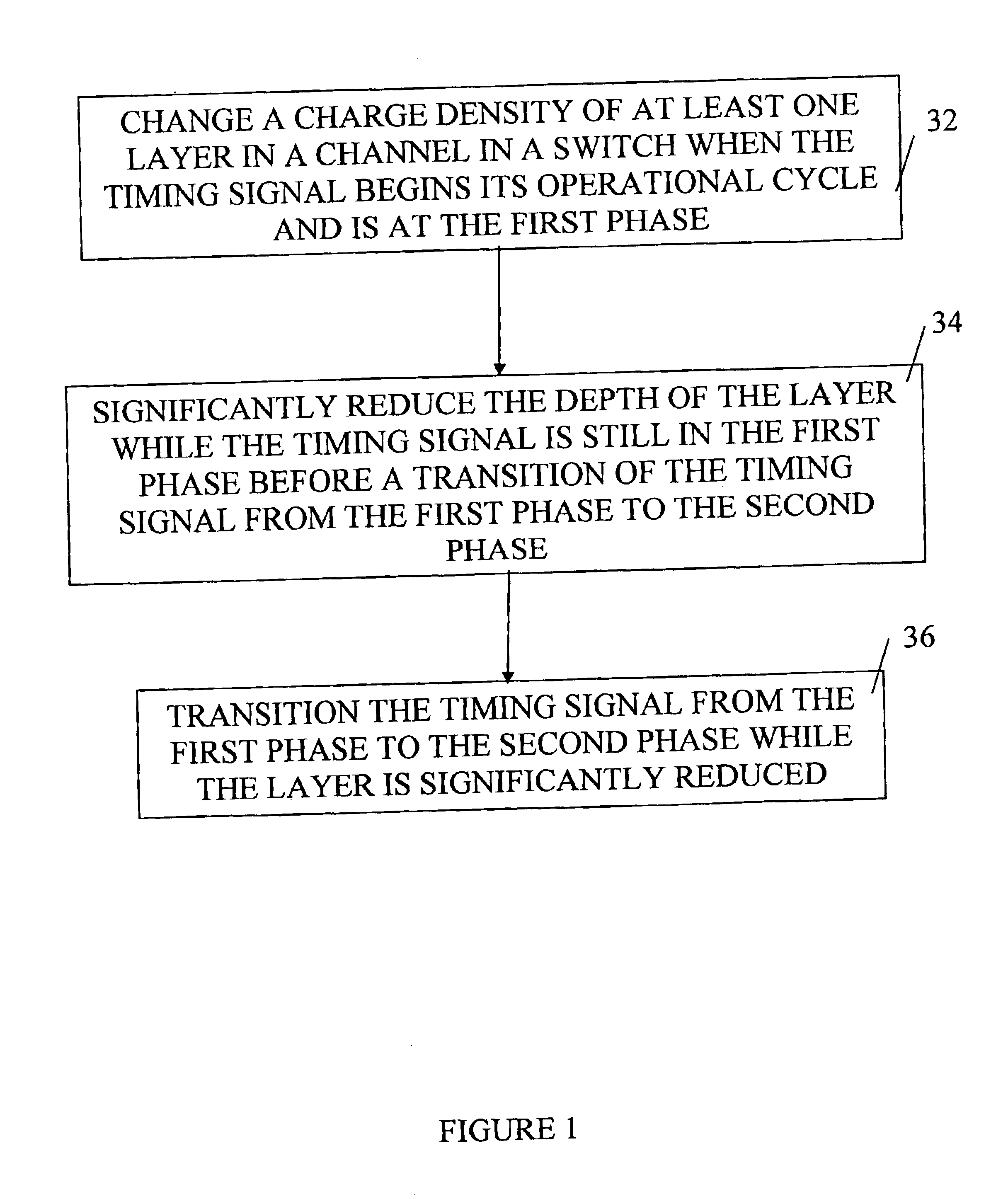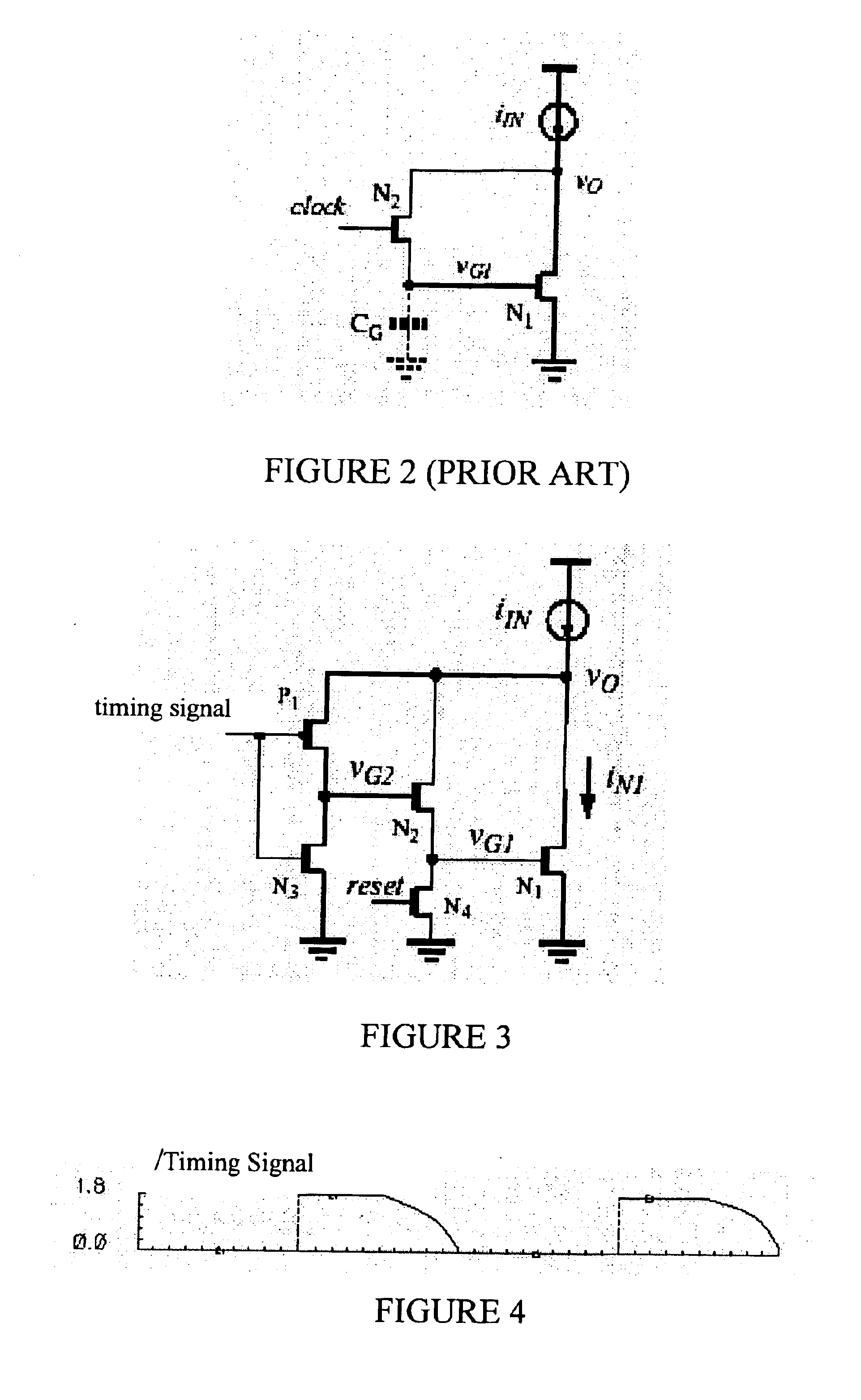Method and circuit for eliminating charge injection from transistor switches
a transistor switch and charge injection technology, applied in the field of transistor switch implementation, can solve the problem of the most serious limitation of transistor switches being the charge injection
- Summary
- Abstract
- Description
- Claims
- Application Information
AI Technical Summary
Benefits of technology
Problems solved by technology
Method used
Image
Examples
Embodiment Construction
of a simulated waveform for the voltage at node VO from FIG. 3;
[0023]FIG. 5F is a graph of a simulated waveform for the current in transistor N1 from FIG. 3;
[0024]FIG. 6 is a graph of the voltage variation at the critical gate node of transistor N1 versus the input current of the circuit of FIG. 3; and
[0025]FIG. 7 is a graph of the gate voltage of the MOS switch N2 at the end of the first phase versus the input current of the circuit of FIG. 3.
DETAILED DESCRIPTION OF THE PREFERRED EMBODIMENT
[0026]Although the preferred embodiment consists of a MOSFET switch for the transistor, it can be appreciated that the technique can be used for JFETs as well.
[0027]FIG. 1 is a flowchart of the method in accordance with the invention. It is a method for reducing charge injection from a field effect transistor switch in a circuit being controlled by a timing signal having an operation cycle comprising at least a first phase and a second phase. During phase 1, the timing signal is at a first voltag...
PUM
 Login to View More
Login to View More Abstract
Description
Claims
Application Information
 Login to View More
Login to View More - R&D
- Intellectual Property
- Life Sciences
- Materials
- Tech Scout
- Unparalleled Data Quality
- Higher Quality Content
- 60% Fewer Hallucinations
Browse by: Latest US Patents, China's latest patents, Technical Efficacy Thesaurus, Application Domain, Technology Topic, Popular Technical Reports.
© 2025 PatSnap. All rights reserved.Legal|Privacy policy|Modern Slavery Act Transparency Statement|Sitemap|About US| Contact US: help@patsnap.com



